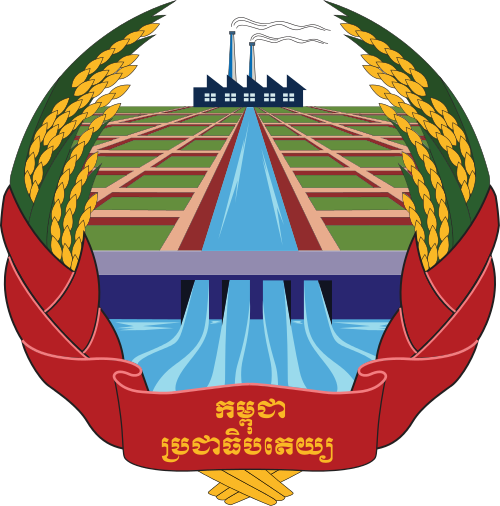The Kampuchean People’s Representative Assembly (KPRA) was the legislative body established under the 1976 constitution of Democratic Kampuchea, a significant symbol of governance under the Khmer Rouge regime. While it was designed to represent the populace, the KPRA ultimately served as a façade for a totalitarian state, where real power resided with Angkar and the Communist Party of Kampuchea (CPK). This assembly exemplified the Khmer Rouge’s radical ideology while having little influence over actual governance.
Structure and Role of the KPRA
The Constitution of Democratic Kampuchea, adopted on January 5, 1976, formally established the KPRA as a representative body. It was composed of 250 representatives, with a specific allocation of seats reflecting the regime’s ideological focus on agrarianism and class representation. According to the constitution:
- 150 seats were reserved for representatives of the peasants.
- 50 seats were designated for the laborers and other working people.
- 50 seats were allocated to the Kampuchea Revolutionary Army (KRA)
This allocation was intended to demonstrate the Khmer Rouge’s commitment to a revolutionary class structure, emphasizing the importance of the peasantry and labor in their envisioned society. However, this model starkly contrasted with the practices of other communist states, where party membership often dictated representation.
Legislative Power: A Facade
In theory, the KPRA was meant to embody the voice of the Cambodian people, drawing representatives from various sectors across the country. However, in practice, the assembly had no real legislative power. Unlike other political systems where legislative bodies could at least nominally pass laws or act as forums for debate, the KPRA was merely a tool for legitimizing decisions made by the ruling Khmer Rouge.
All major policy decisions were orchestrated by Angkar, the organization synonymous with the CPK, which wielded ultimate authority. Angkar’s leadership, particularly the Standing Committee led by Pol Pot, made key decisions, while the KPRA served primarily to endorse these actions without any independent authority.
Timeline of the KPRA
- April 17, 1975: The Khmer Rouge takes control of Phnom Penh and begins their reign over Cambodia.
- January 5, 1976: The Constitution of Democratic Kampuchea is adopted, officially establishing the KPRA.
- March 20, 1976: The first formal session of the KPRA is held, revealing its lack of legislative power.
- April 11, 1976: Prince Norodom Sihanouk is officially removed as head of state, and the KPRA becomes the highest governing body, though real power lies with Angkar.
- January 7, 1979: Vietnamese forces overthrow the Khmer Rouge, bringing an end to Democratic Kampuchea and dissolving the KPRA.
Composition of the KPRA
The composition of the KPRA was intended to reflect the Khmer Rouge’s ideology and its focus on agrarian socialism. The decision to reserve seats for specific groups highlights the regime’s efforts to portray itself as a government of the people, despite the reality of its authoritarian rule.
The allocation of seats was as follows:
- Peasants: 150 seats were to be filled by representatives from rural communities, emphasizing the regime’s reliance on the agrarian population and its commitment to collectivization.
- Laborers and Other Working People: 50 seats were designated for laborers, reflecting the regime’s ideology that prioritized manual labor in the transition to a communist society.
- Kampuchea Revolutionary Army: 50 seats were allocated to representatives of the KRA, underscoring the importance of military power in the Khmer Rouge’s governance.
This structure was markedly different from other communist regimes, where legislative bodies often included members strictly from the ruling party or its aligned organizations.
Comparison with Other Communist States
To better understand the unique nature of the KPRA, it is useful to compare it to the legislatures of other communist states, which, while also tightly controlled, operated under different structural norms.
Soviet Union
In the Soviet Union, the Supreme Soviet was the formal legislative body. While the Communist Party of the Soviet Union (CPSU) controlled all aspects of life, the Supreme Soviet at least had a defined role, passing laws and approving budgets. It operated as a forum for limited public debate, despite being fully controlled by the CPSU. In contrast, the KPRA had no such functions, as all decision-making remained firmly in the hands of Angkar, with no room for genuine representation or debate.
East Germany and North Korea
In East Germany, the Volkskammer (People’s Chamber) comprised not only members of the Socialist Unity Party (SED) but also representatives from allied political organizations under the National Front. Similarly, in North Korea, the Supreme People’s Assembly includes members from various parties and social groups, all under the dominance of the Workers’ Party of Korea (WPK).
These states used their legislatures to create a façade of political plurality and debate, albeit under strict party control. The KPRA, however, made no effort to cultivate such appearances. The assembly was a closed system, designed solely to endorse decisions made by the Khmer Rouge leadership.
Unique Features of the KPRA
- Seat Allocation: Unlike the Soviet Union and other communist states, where party membership dictated representation, the KPRA explicitly allocated seats based on social class. This reflected the Khmer Rouge’s agrarian ideology but ultimately served to reinforce its authoritarian rule rather than facilitate genuine representation.
- Absence of Party Dominance: While other communist states operated under the dominance of a single party, the KPRA operated without the pretense of a pluralistic political structure. It had no rival parties or independent organizations, leading to a stark absence of political discourse or dissent.
- Lack of Legislative Function: The KPRA had no power to enact laws or hold debates on national policy, which stood in contrast to other communist legislative bodies, which, although controlled, had at least nominal functions related to governance.
Conclusion
The Kampuchean People’s Representative Assembly was a critical component of the Khmer Rouge’s regime, symbolizing the party’s claims to represent the Cambodian people while operating as a mere extension of Angkar’s power. With its unusual structure of representation, it attempted to reflect the regime’s ideology but ultimately became a tool for legitimizing the authority of the Communist Party of Kampuchea. Unlike other communist states with their formal legislative processes and party membership-based representation, the KPRA was unique in its subservience to a singular authority, devoid of any real power or agency.
As such, the KPRA serves as a poignant reminder of the Khmer Rouge’s radical ideology and the extreme measures taken to establish a totalitarian state in Cambodia.









